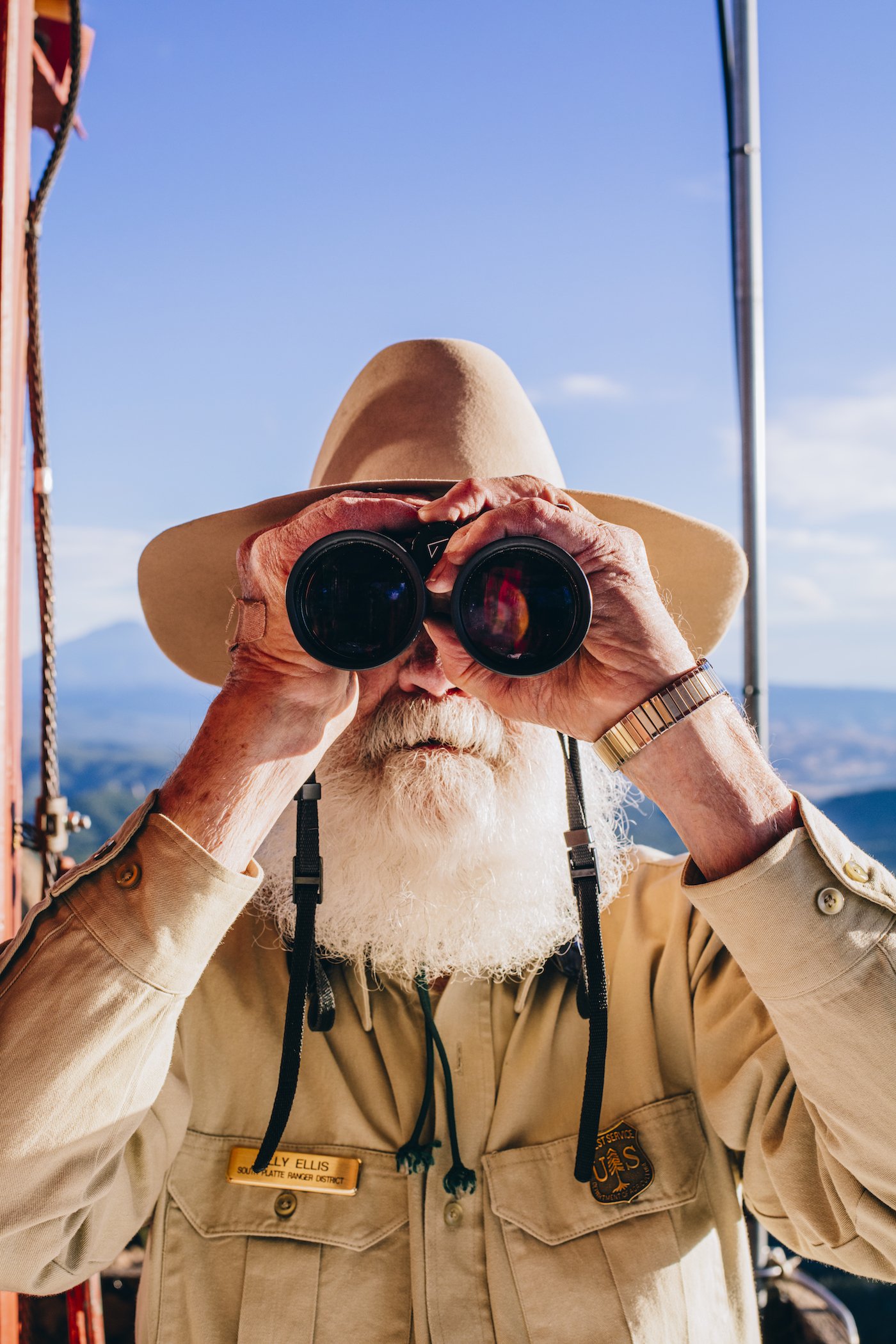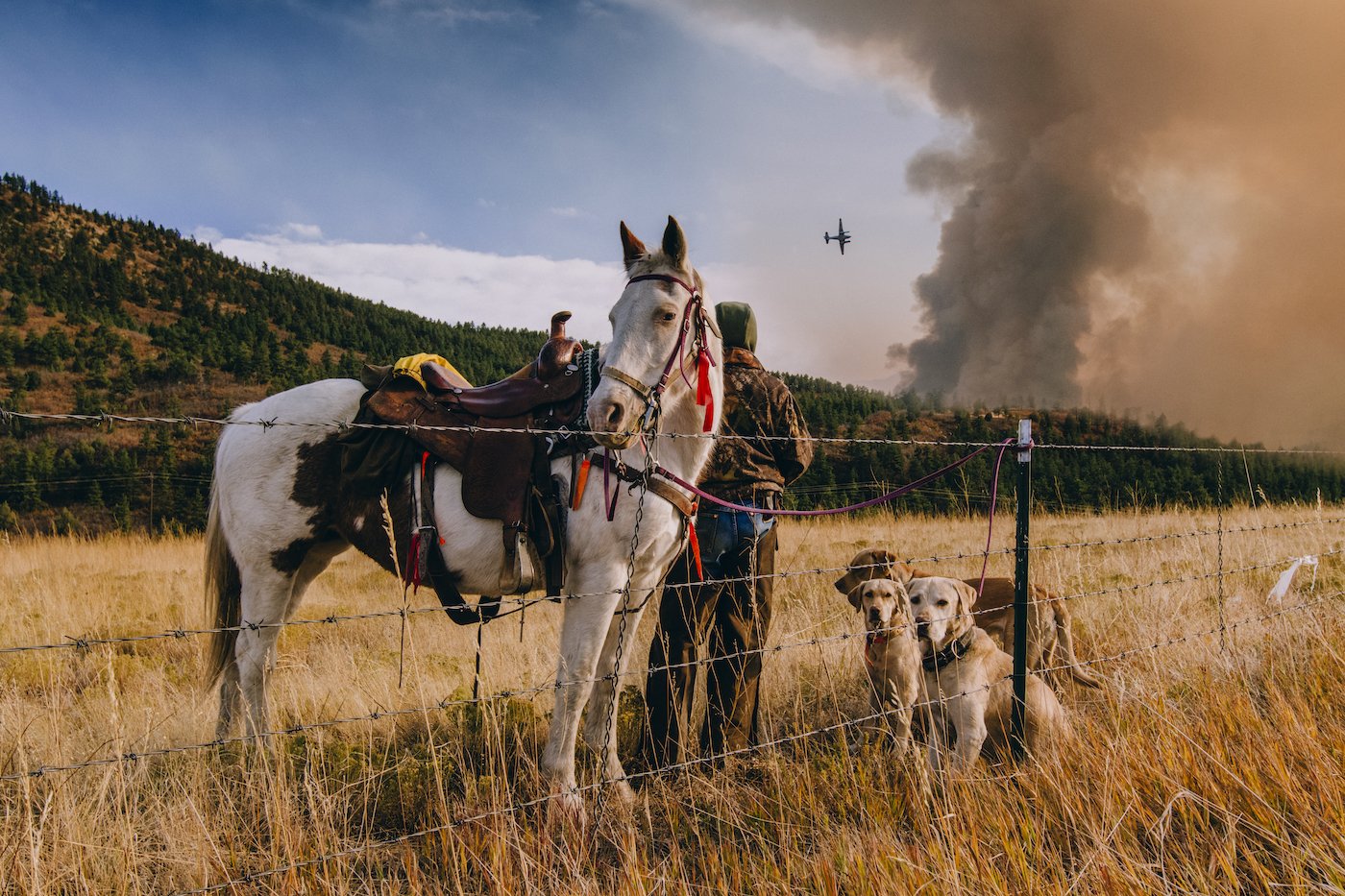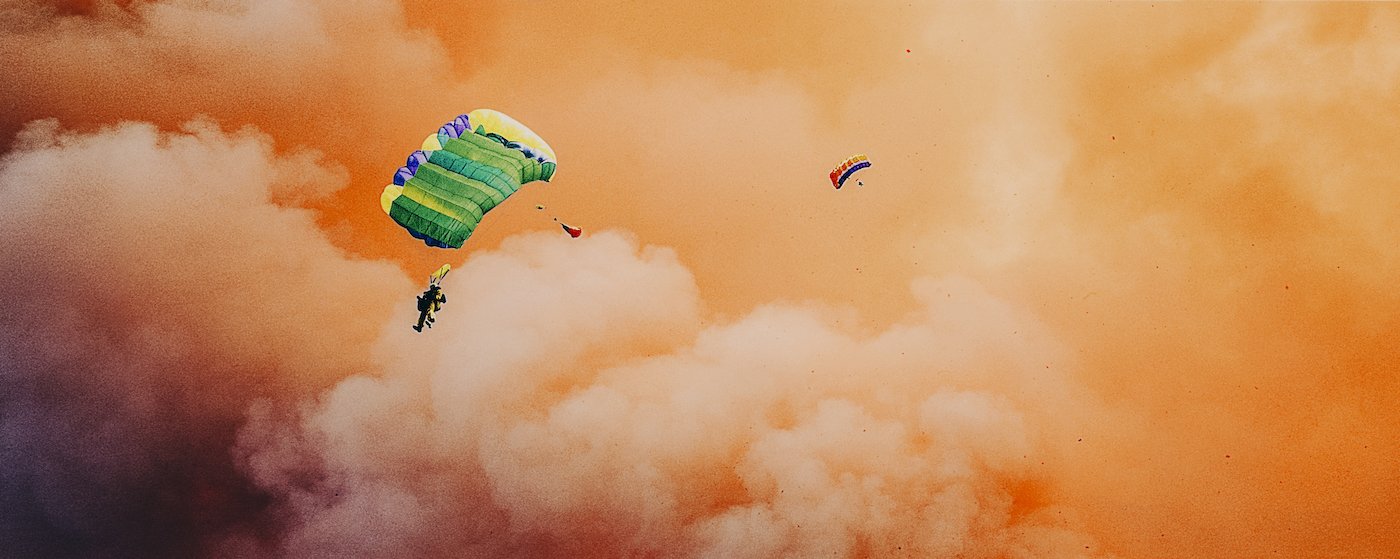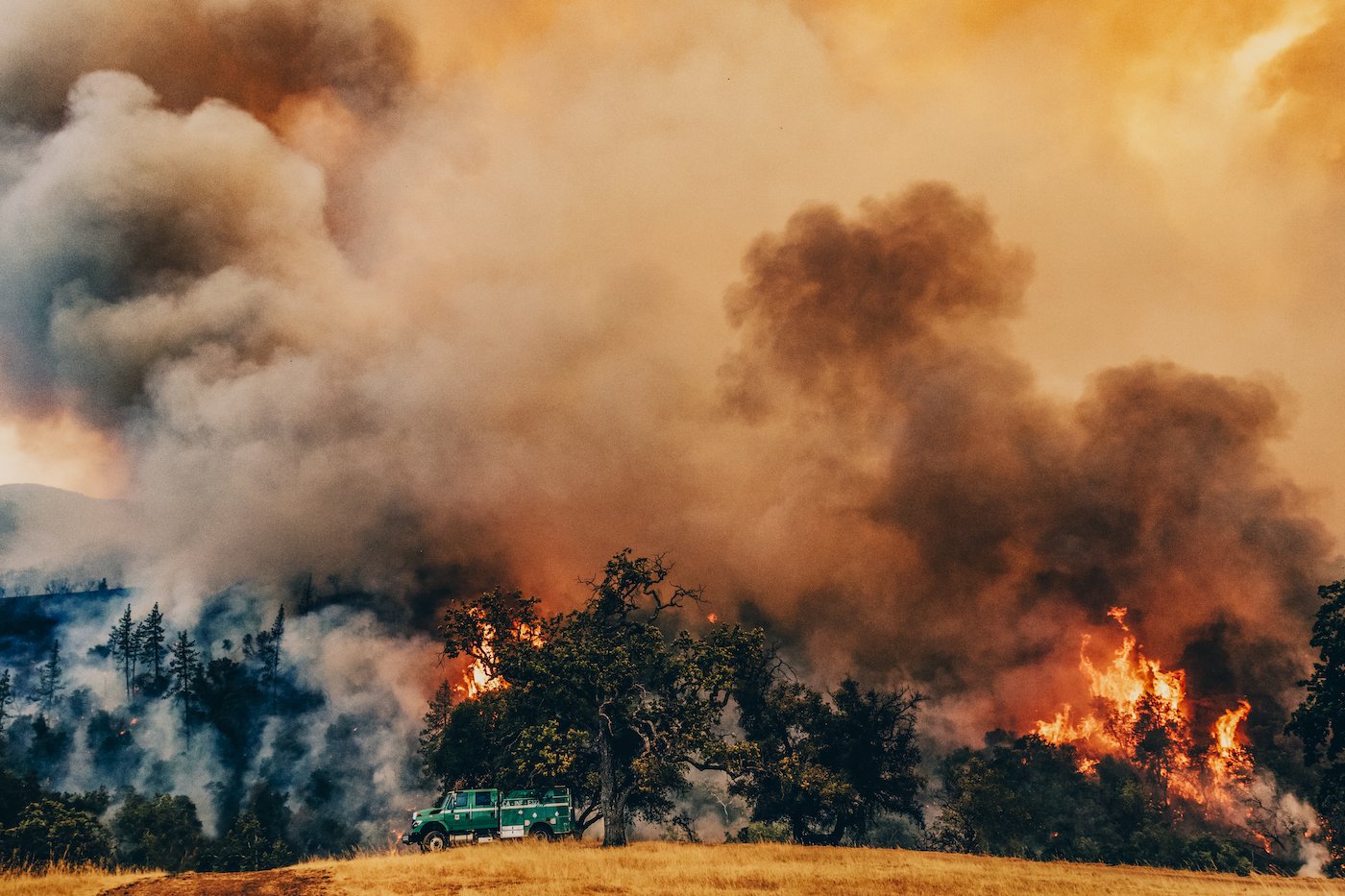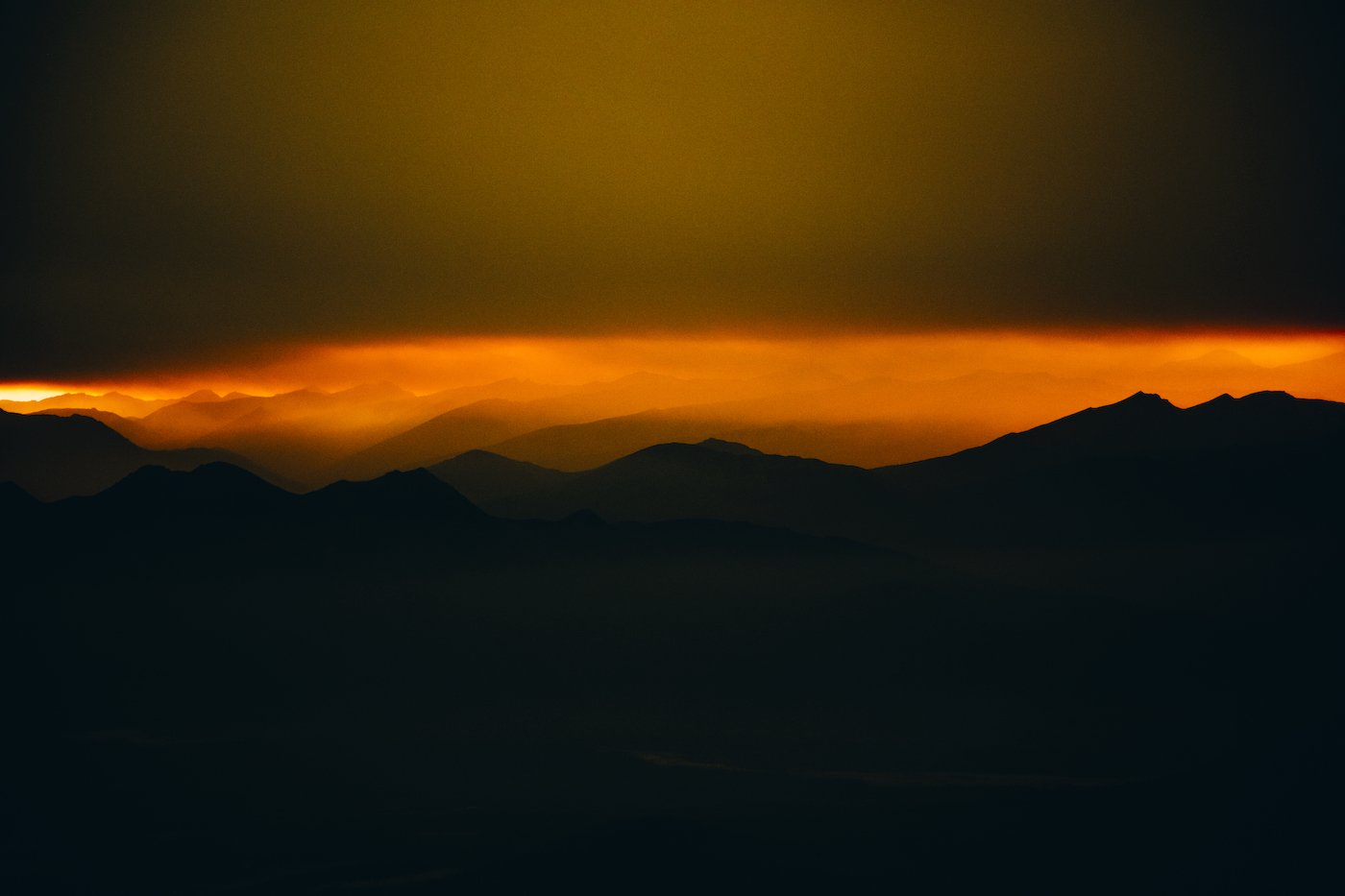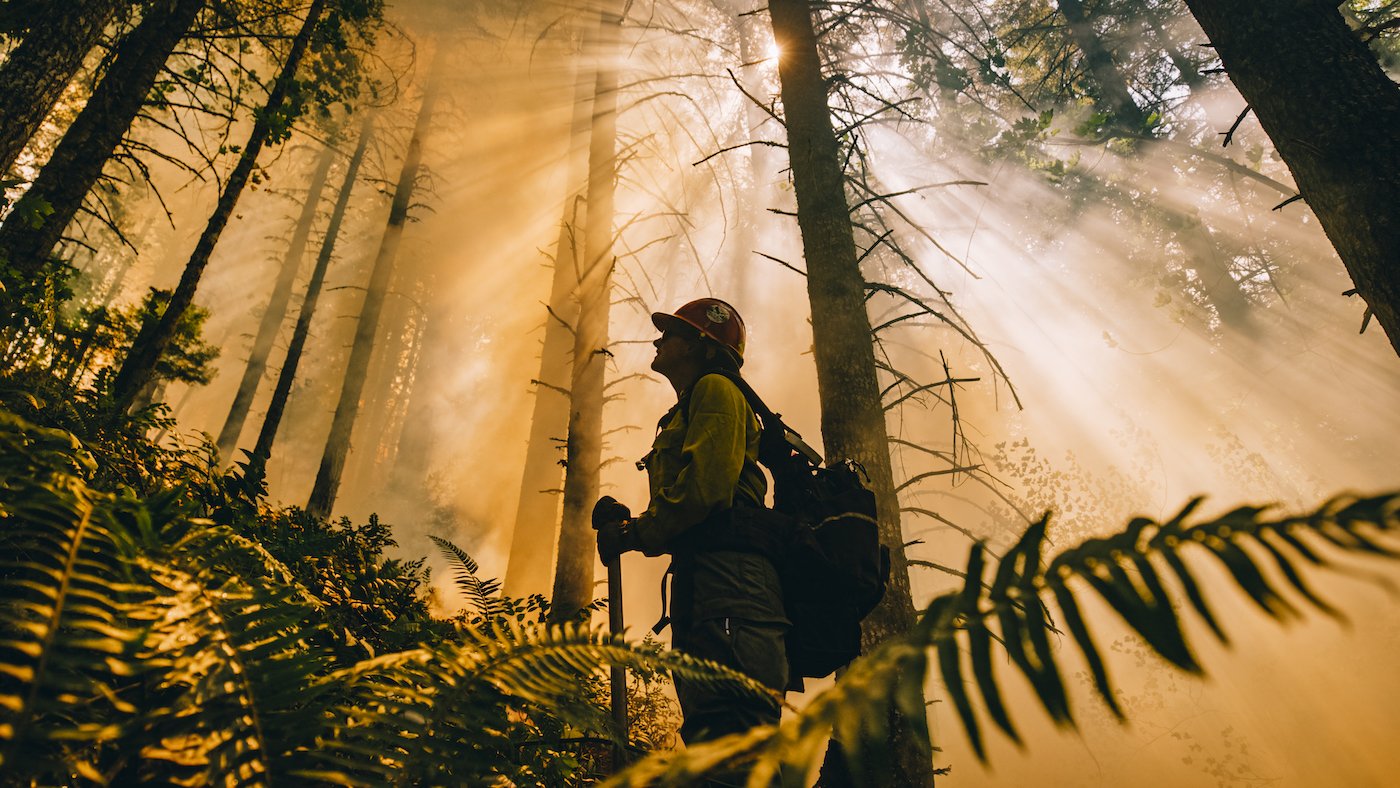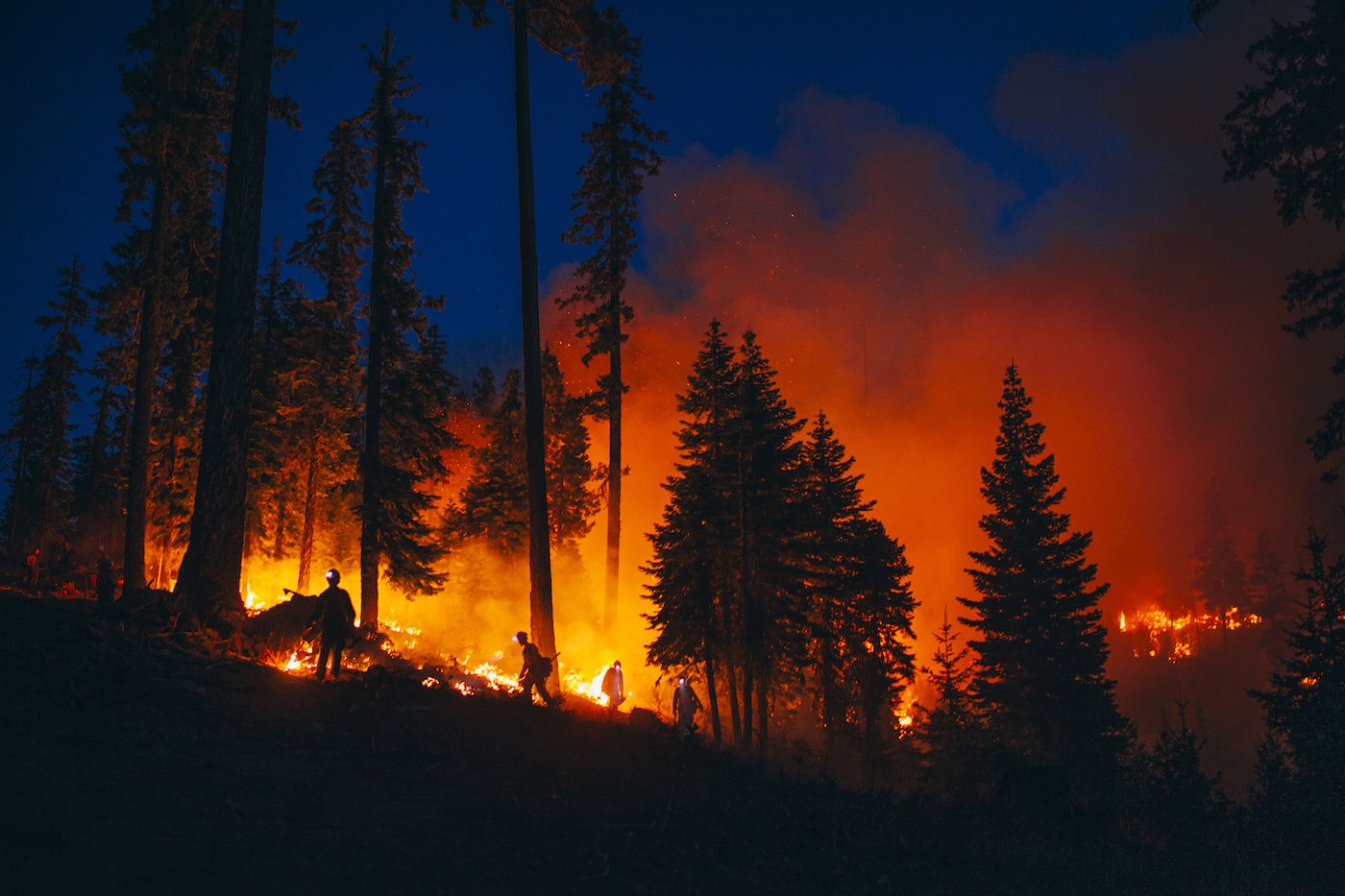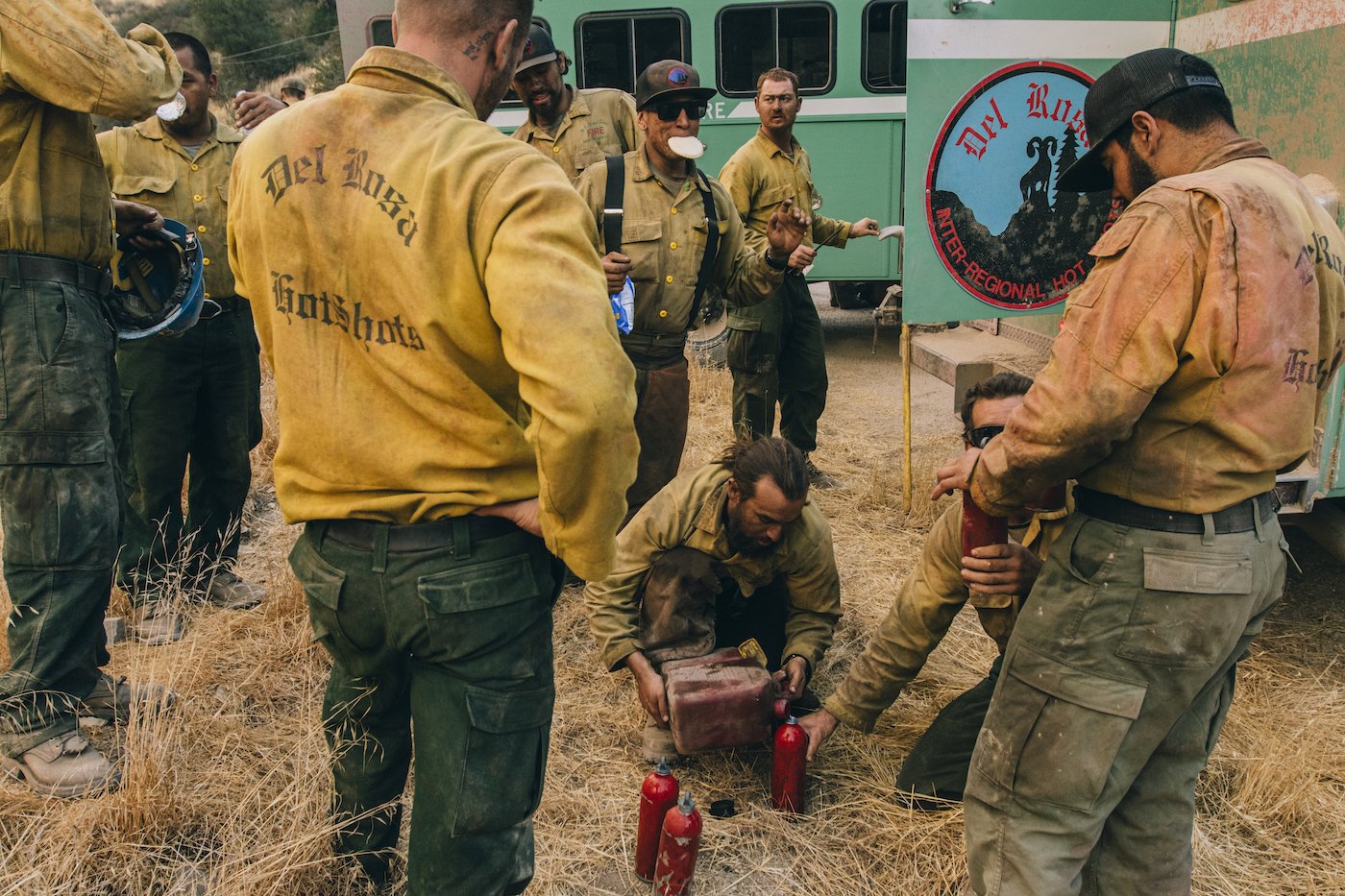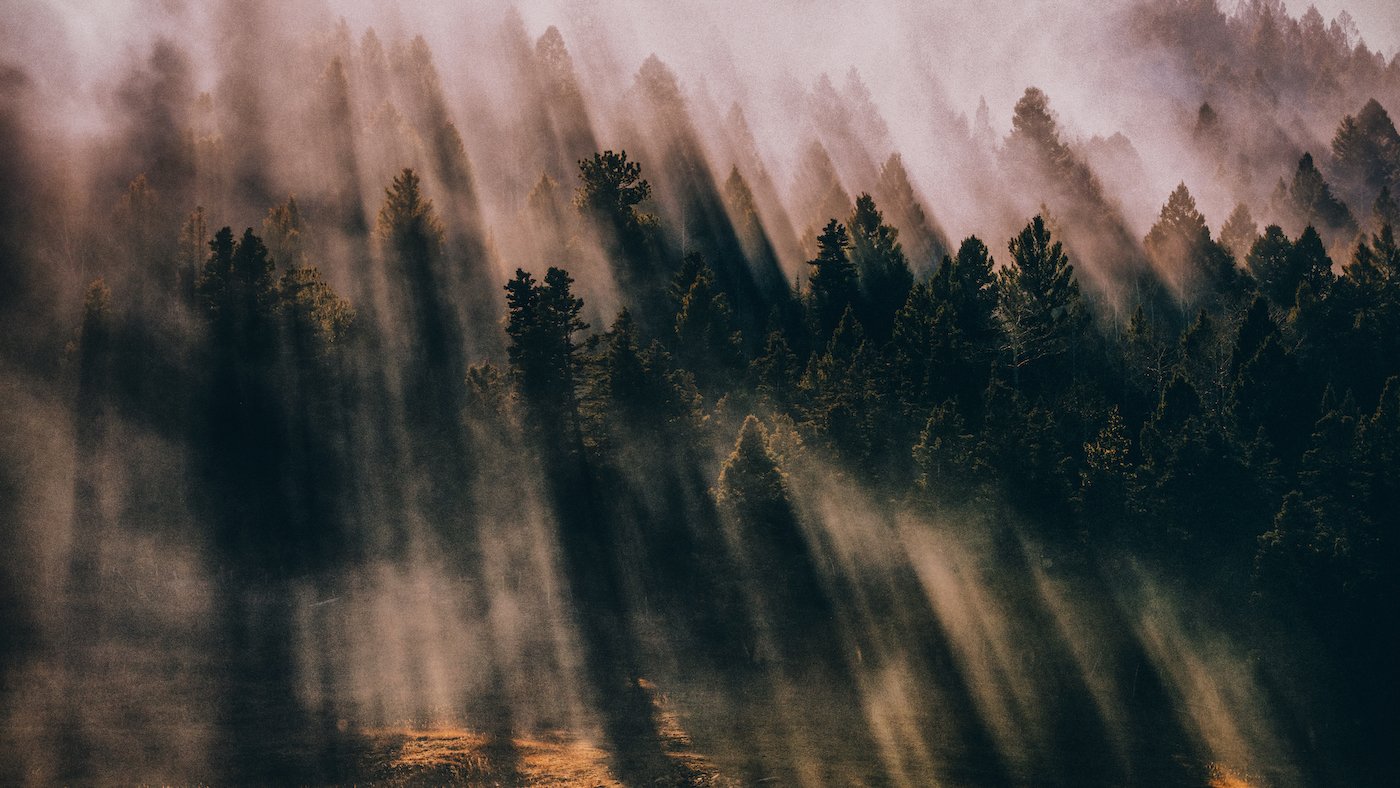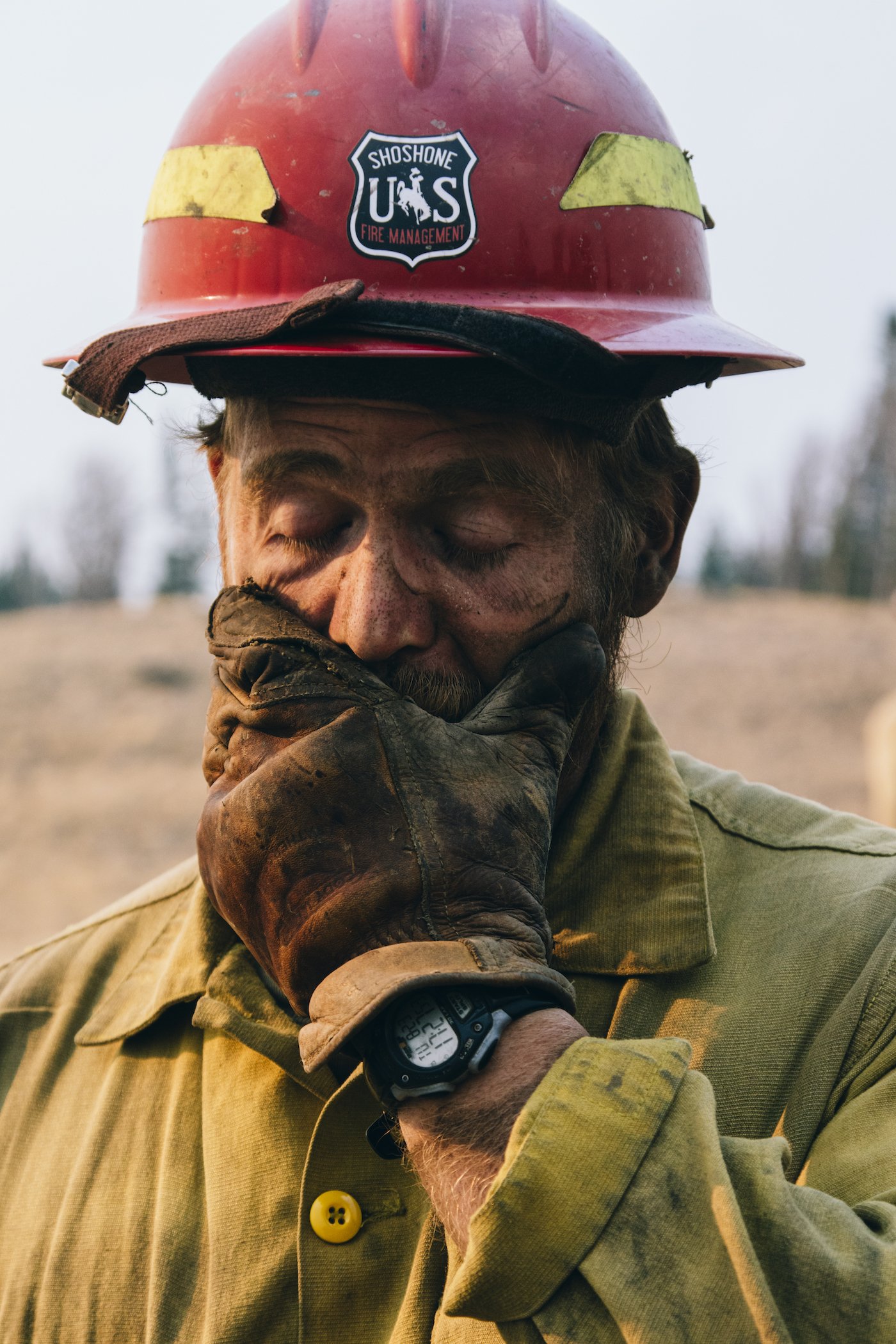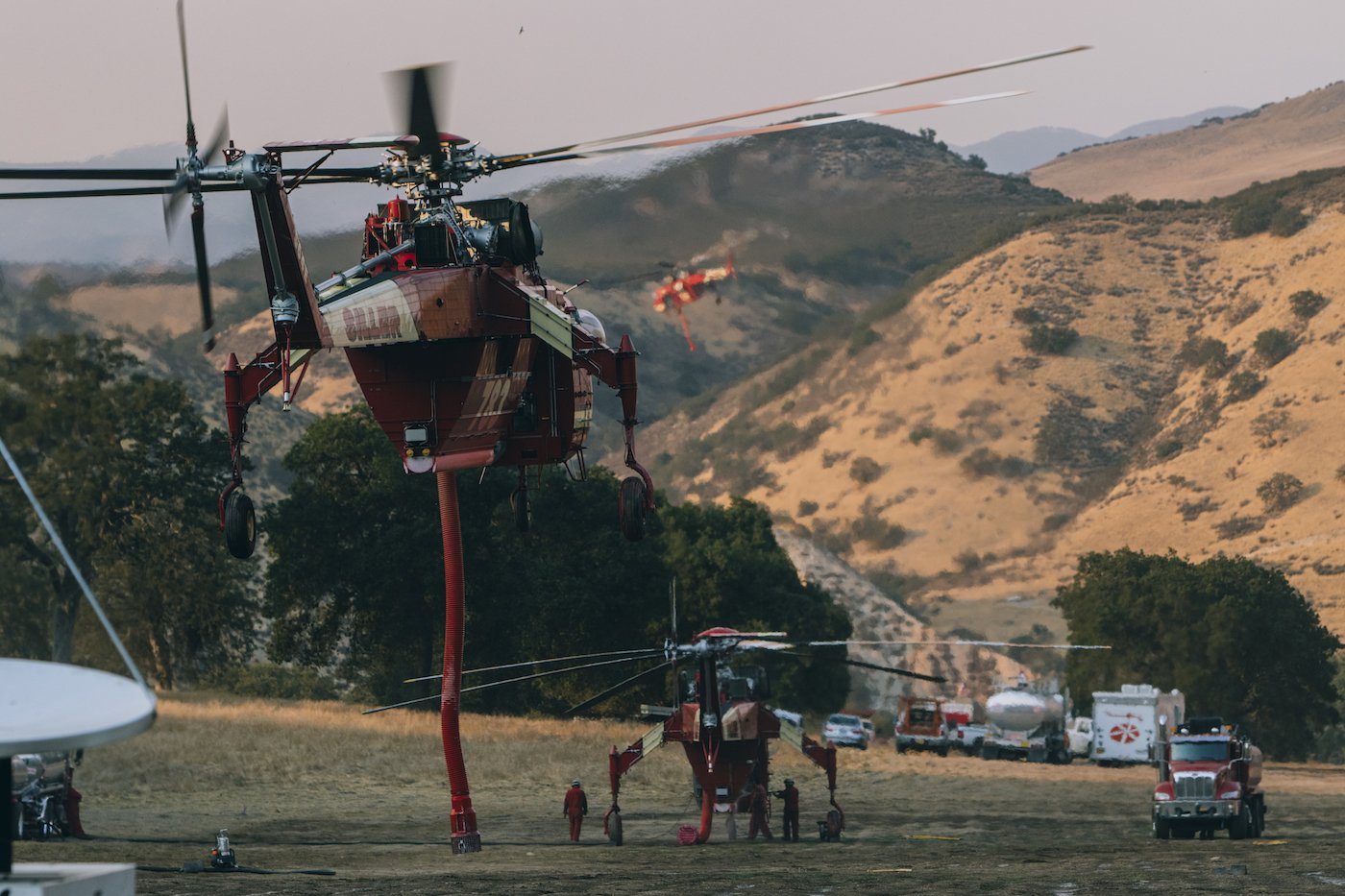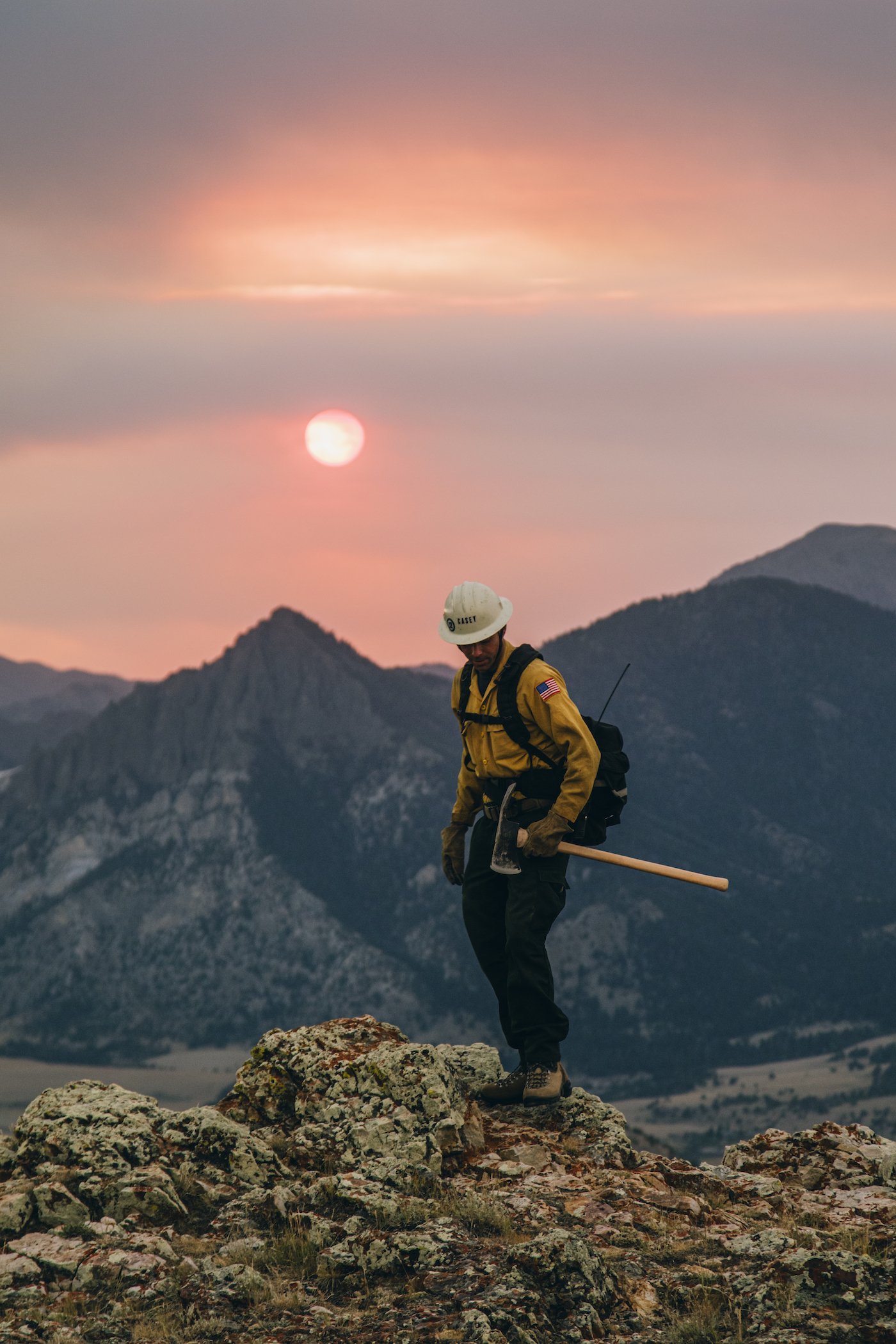Early in the summer of 2012, I was in the middle of a move from New York City to Boulder. As my plane approached Denver International Airport, I heard gasps from passengers looking out the windows toward the mountains. A harsh red streak outlined the ridge tops, and black plumes of smoke rose into large pyrocumulus clouds. I’d seen tornados, earthquakes, hurricanes, and floods, but never a wildfire. I spent the rest of that summer watching a parade of trucks roll through the streets surrounding Boulder. The ash-covered faces of firefighters were glued to the windows. Many looked young. All looked tired. When I turned on the news, I saw heartbreaking stories of damage, destruction, and displaced citizens. But I never saw footage of those faces endlessly driving by my house.
At the end of fire season, I began a multiyear process of gaining the necessary access to tell the stories of the men and women who work countless hours to put out the fires. Beginning in 2014, in cooperation with the U.S. Forest Service, I immersed myself with Wildland Fire Incident Command Teams throughout the country. I slept in tents, on the grass, and in trucks with the many different units responsible for fire abatement, from the glamorous hotshots to the unsung radio dispatchers.
Fires are remembered by the scope and scale of their destruction. My goal was to show the army that stopped them. Over the past several years I have documented wildland fire crews for media outlets such as Netflix, BBC, PBS, Outside Magazine, and others. I received a contract through The Forest Service to become an on call photographer and videographer for national wildland fire incidents. These images and videos are a small collection of what I saw and the stories I was able to tell while out on dozens of fires across the country.



